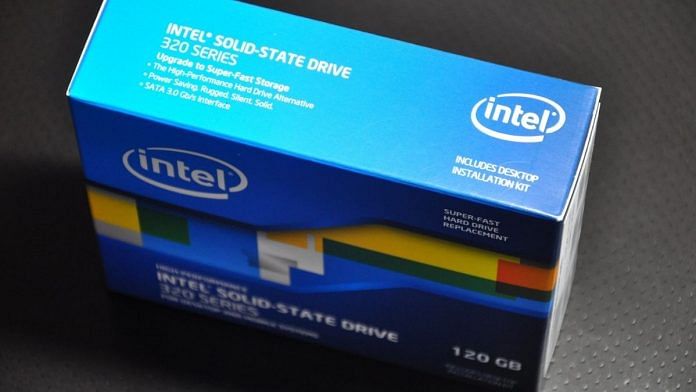Intel Corp. has stumbled lately. To right itself, the semiconductor giant needs to get back to basics and prioritize its main business. An exit from the memory industry will help that effort.
The company agreed to sell its Nand memory-chip subsidiary to South Korea’s SK Hynix Inc. for about $9 billion, the Asian chipmaker said in a statement late Monday New York time. Despite large investments in flash memory, Intel has never been able to become a big player in these types of semiconductors, which are used in storage devices inside computer hard drives and consumer electronics. That’s a problem because in a commodity market such as memory, leadership and size are essential to generate profits over the long term.
With no prospects for large gains on the horizon, Intel is smart to give up on memory. First, the move can help the company’s bottom line. Earlier this month, Raymond James estimated Intel could boost its annual free cash flow by $2 billion if it left the memory business. Second, the prospects of this part of the chip industry aren’t very promising. This, analysts say, is because market leader Samsung is willing to flood the market if necessary to defend its leading position, without regard to maintaining its prices. Not a great situation for the other smaller players. Even Micron Technology Inc. CEO Sanjay Mehrotra hinted at those difficult industry dynamics during his earnings call last month. He noted the industry needs to reduce its factory investments if chipmakers wanted to improve the market’s profitability. This is a battle Intel doesn’t need to fight.
But most importantly, Intel needs to focus on its primary business: central-processing unit (CPU) chips. Frankly, the company has gotten distracted with several needless acquisitions and forays into disparate markets such as security software, smartphone wireless chips and programmable FPGA chips. All those areas don’t matter if the company loses technical leadership in the CPU market. And after Intel revealed in July that another next-generation chip based on 7-nanometer manufacturing technology would be delayed, most analysts now believe Advanced Micro Devices Inc. has the prime position to make the fastest, best-performing processors for several years.
A $9 billion deal isn’t going to fix all the problems of a $200 billion company. But every step toward a more focused Intel is a positive.







It’s like Mr. Shankaran Pillai was smart by selling his right kidney to cut his costs.
Hi needs oneline internship electronic telecommunication communications networkinge application UX designer needs jobs from Nioda